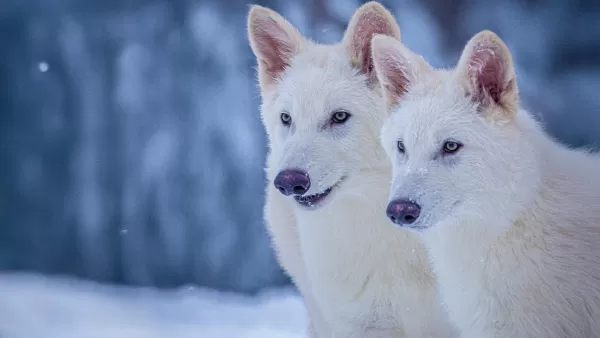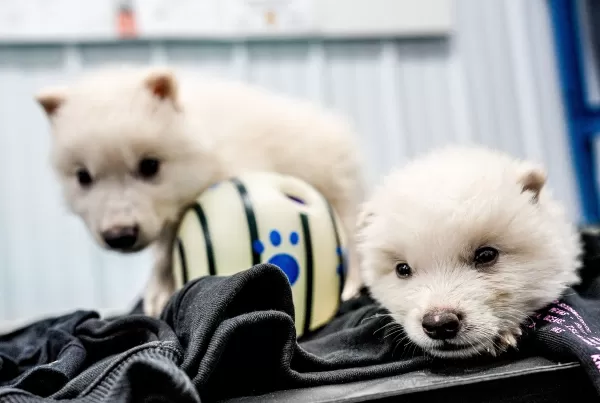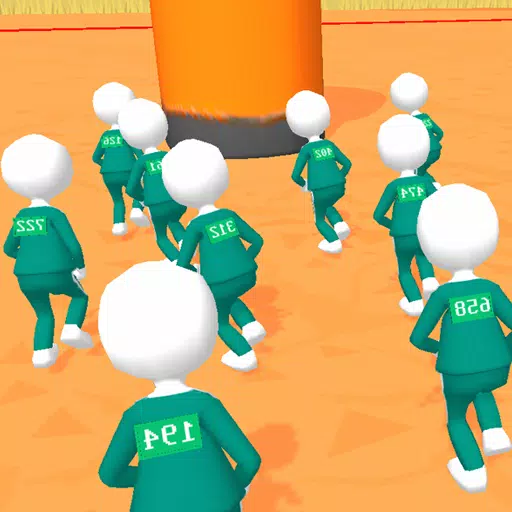Bringing a super-sized canine back from extinction after 12,500 years might sound like a plot from a blockbuster film, complete with dramatic special effects, but it's now a reality thanks to the efforts of a biotech company. Colossal Biosciences has successfully reintroduced the dire wolf to the world, with three of these magnificent creatures—Romulus, Remus, and Khaleesi—now residing in a secret location within the United States.
 Romulus and Remus at three months old
Romulus and Remus at three months old
The team at Colossal Biosciences, driven by a passion akin to that of Game of Thrones fans, employed advanced genetic techniques to achieve this feat. They utilized DNA extracted from the common gray wolf, applied gene-editing technology, and used domestic dog surrogates to bring these dire wolves to life. The result is three awe-inspiring, large, and white canines that embody the majestic essence any mother of dragons would dream of.
Ben Lamm, CEO of Colossal, expressed immense pride in the team's achievement, stating, “I could not be more proud of the team. This massive milestone is the first of many coming examples demonstrating that our end-to-end de-extinction technology stack works.” The process involved extracting DNA from a 13,000-year-old tooth and a 72,000-year-old skull, showcasing the magic of advanced technology in action. Lamm added, “Our team took DNA from a 13,000 year old tooth and a 72,000 year old skull and made healthy dire wolf puppies. It was once said, ‘any sufficiently advanced technology is indistinguishable from magic.’ Today, our team gets to unveil some of the magic they are working on and its broader impact on conservation.”
 Romulus and Remus at one month old
Romulus and Remus at one month old
This isn't the first time Colossal Biosciences has captured headlines. Previously, they engineered a Colossal Woolly Mouse, designed to mimic the mammoth phenotype using computational analysis of 59 woolly, Columbian, and steppe mammoth genomes spanning from 3,500 to over 1,200,000 years old. Despite their successes, the company faces criticism from some quarters, with detractors arguing that the dire wolves are essentially normal wolves dressed up in genetic costumes. They contend that the existing dire wolf DNA is insufficient for creating a true genetic clone.
However, the mission of Colossal Biosciences extends beyond creating viral sensations or owning extraordinary pets. The company aims to leverage its findings to enhance the conservation of current species for future generations. Dr. Christopher Mason, a scientific advisor and member of the board of observers for Colossal, emphasized the broader implications of their work, saying, “The de-extinction of the dire wolf and an end-to-end system for de-extinction is transformative and heralds an entirely new era of human stewardship of life. The same technologies that created the dire wolf can directly help save a variety of other endangered animals as well. This is an extraordinary technological leap in genetic engineering efforts for both science and for conservation as well as preservation of life, and a wonderful example of the power of biotechnology to protect species, both extant and extinct.”
To ensure the well-being of Romulus, Remus, and Khaleesi, Colossal Biosciences has collaborated with the American Humane Society and the USDA to establish a suitable 2,000+ acre preserve for their home. These dire wolves are treated like celebrities, with a dedicated staff to cater to their needs, ensuring they live a life befitting their extraordinary origins.
 Home
Home  Navigation
Navigation






 Latest Articles
Latest Articles










 Latest Games
Latest Games











